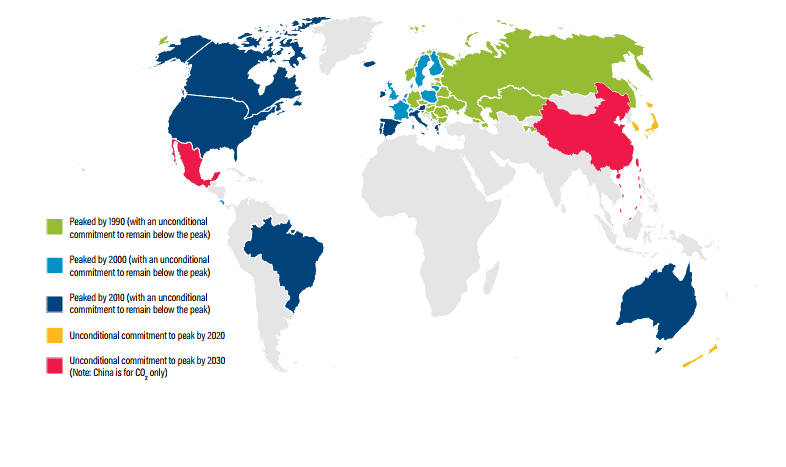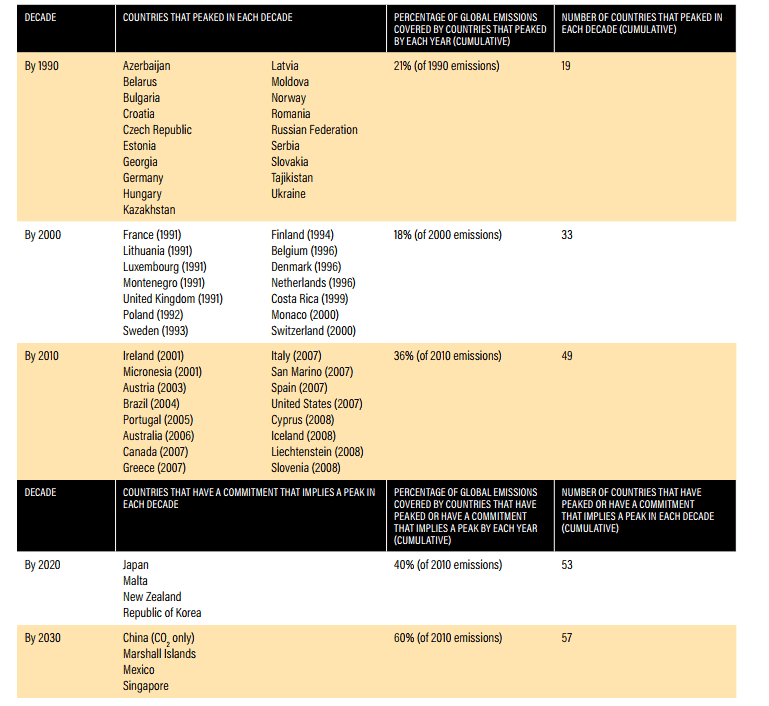In the Paris Agreement, most of the international community has pledged to limit global temperature rise to less than 2C above pre-industrial levels. Several countries are already taking active steps, doing their part in reducing emissions and in 49 countries, they’ve already peaked and going back. However, this is no time to pat ourselves on the back. While emissions are going down, they’re not going down nearly fast enough and we’re on track for a 3C temperature rise, which will cause dramatic shifts worldwide.

A new report published by World Resources Institute (WRI), a US-based global environmental research group, concludes that countries amounting to 36% of global emissions have reached their peak. Most of Central and Eastern Europe have already peaked for more than 20 years, with other European countries like France or the United Kingdom peaking by 2000. Meanwhile, the US, Canada, Brazil, and Australia peaked by 2010. Another 8 countries representing another 23% of emissions are on course to reach their peak within a decade. The most notable mentions are China and Mexico.
Figuring out whether a country has peaked or not is not as straightforward as it might seem. Aside from actually measuring and quantifying the emissions, there’s also the matter of establishing what a peak means. Just because emissions have gone down for 2-3 years doesn’t necessarily mean that the trend will continue in the future. For instance, China’s emissions have dropped significantly in both 2015 and 2016 but it’s not clear whether the trend will continue. However, almost all experts agree that China will peak by 2030.

If we want to have a decent shot at staying within the 2C warming, global emissions need to peak sometime within the next decade and start declining sharply after that. If global peak emissions are only achieved in 2025, that won’t give economies enough time to adapt, and irreversible environmental damage will be done. If the peak would be achieved this year, we would have 25 years to reach zero or almost zero global emissions, and that would almost certainly ensure less than 2C warming.

However, that optimistic scenario doesn’t seem too likely right now. Latest projections pointing to an increase of 3.2C by 2100, which would be a massive difference. Scientists at the non-profit organization Climate Central estimate that 275 million people worldwide live in areas that will eventually be flooded at 3C of global warming. This, along with many other drastic consequences, will wreak havoc on the planet. No corner of the Earth will remain unaffected, as we’re already starting to see.
“[We] still find ourselves in a situation where we are not doing nearly enough to save hundreds of millions of people from a miserable future,” said Erik Solheim, the UN environment chief, ahead of the upcoming Bonn conference.






